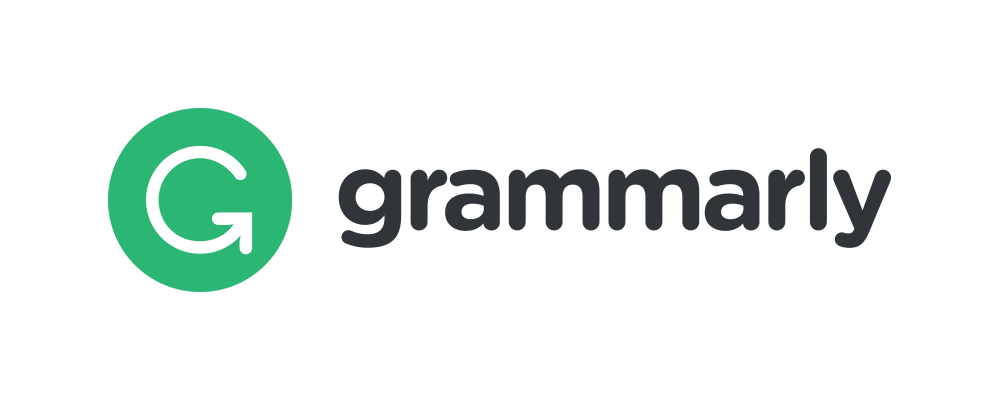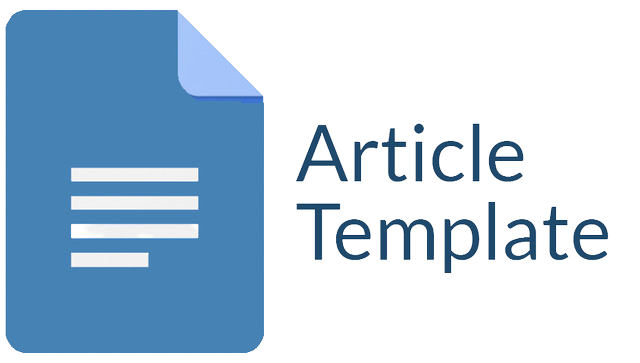EFEK MOTIVASI INTRINSIK DARI STRATEGI ELEMEN GAMIFIKASI PEMBELAJARAN
Abstract
This study aims to examine and analyze the differences in intrinsic motivation of learners based on Point+Leaderboard (PL) and Point+Badge (PB) gamification element strategies. The research sample was 84 undergraduate students of the Department of Educational Technology, State University of Malang. Data was collected using the Intrinsic Motivation Inventory (IMI) questionnaire which consists of 4 variables: interest/enjoyment (EJ), perceived competence (PC), effort (EF), and pressure (PR). The research method used the Independent T-Test to test the difference in intrinsic motivation between OT and PB groups. The t-test results showed significant differences in EJ and EF variables between OT and PB groups. This shows that PL is more effective in increasing learners' enjoyment/interest and effort compared to PB. However, there is no significant difference in PC and PR variables between OT and PB groups. This means that both PL and PB are equally able to give positive effects on the sense of competence and do not cause negative effects on learners' stress. This study shows that Point+Leaderboard strategy is more effective in increasing learners' intrinsic motivation compared to Point+Badge strategy
Downloads
References
Abdul Rahman, M. H., Ismail Yusuf Panessai, I., Mohd Noor, N. A. Z., & Mat Salleh, N. S. (2018). Gamification Elements And Their Impacts On Teaching And Learning – A REVIEW. The International Journal of Multimedia & Its Applications, 10(06), 37–46. https://doi.org/10.5121/ijma.2018.10604
Alsawaier, R. S. (2018). The effect of gamification on motivation and engagement. The International Journal of Information and Learning Technology, 35(1), 56–79. https://doi.org/10.1108/IJILT-02-2017-0009
Balci, S., Secaur, J. M., & Morris, B. J. (2022). Comparing the effectiveness of badges and Leaderboard s on academic performance and motivation of students in fully versus partially gamified online physics classes. Education and Information Technologies, 27(6), 8669–8704. https://doi.org/10.1007/s10639-022-10983-z
Botte, B., Bakkes, S., & Veltkamp, R. (2020). Motivation in Gamification: Constructing a Correlation Between Gamification Achievements and Self-determination Theory (I. Marfisi-Schottman, F. Bellotti, L. Hamon, & R. Klemke, Eds.; pp. 157–166). Springer International Publishing. https://doi.org/10.1007/978-3-030-63464-3_15
Chan, E., Nah, F. F.-H., Liu, Q., & Lu, Z. (2018). Effect of Gamification on Intrinsic Motivation (F. F.-H. Nah & B. S. Xiao, Eds.; pp. 445–454). Springer International Publishing. https://doi.org/10.1007/978-3-319-91716-0_35
Costa, J. M. (2023). Using game concepts to improve programming learning: A multi-level meta-analysis. Computer Applications in Engineering Education, 31(4), 1098–1110. https://doi.org/10.1002/CAE.22630
Deterding, S. (2012). Gamification: designing for motivation. Interactions, 19(4), 14–17. https://doi.org/10.1145/2212877.2212883
Garcia, S. M., Tor, A., & Schiff, T. M. (2013). The Psychology of Competition: A Social Comparison Perspective. Perspectives on Psychological Science, 8(6), 634–650. https://doi.org/10.1177/1745691613504114
Haaranen, L., Ihantola, P., Hakulinen, L., & Korhonen, A. (2014). How (not) to introduce badges to online exercises. 33–38. https://doi.org/10.1145/2538862.2538921
Hanus, M. D., & Fox, J. (2015). Assessing the effects of gamification in the classroom: A longitudinal study on intrinsic motivation, social comparison, satisfaction, effort, and academic performance. Computers & Education, 80, 152–161. https://doi.org/10.1016/J.COMPEDU.2014.08.019
Jiang, S. (2016). A Review of the Effectiveness of Gamification in Education. https://doi.org/10.2139/ssrn.3163896
Lai, J. Y., & Chang, L. T. (2021). Impacts of Augmented Reality Apps on First Graders’ Motivation and Performance in English Vocabulary Learning. SAGE Open, 11(4). https://doi.org/10.1177/21582440211047549/FORMAT/EPUB
Leuwol, F. S., Basiran, B., Solehuddin, M., Vanchapo, A. R., Sartipa, D., & Munisah, E. (2023). Efektivitas Metode Pembelajaran Berbasis Teknologi Terhadap Peningkatan Motivasi Belajar Siswa Di Sekolah. EDUSAINTEK: Jurnal Pendidikan, Sains Dan Teknologi, 10(3), 988–999. https://doi.org/10.47668/edusaintek.v10i3.899
Mekler, E. D., Brühlmann, F., Opwis, K., & Tuch, A. N. (2013). Do points, levels and Leaderboard s harm intrinsic motivation? An empirical analysis of common gamification elements. ACM International Conference Proceeding Series, 66–73. https://doi.org/10.1145/2583008.2583017
Mills, G. E., & Gay, L. R. (2016). Educational research: Competencies for analysis and applications. Pearson. https://thuvienso.hoasen.edu.vn/handle/123456789/9428
Mills, G. E., & Gay, L. R. (2019). Educational Research: Competencies for Analysis and Applications, 12th Edition. Pearson. files/794/eric.ed.gov.html
Monteiro, V., Mata, L., & Peixoto, F. (n.d.). Intrinsic Motivation Inventory: Psychometric Properties in the Context of First Language and Mathematics Learning. Psychology/Psicologia Refl Exão e Crítica, 28(3), 434–443. https://doi.org/10.1590/1678-7153.201528302
Ortiz-Rojas, M., Chiluiza, K., & Valcke, M. (2019). Gamification through Leaderboard s: An empirical study in engineering education. Computer Applications in Engineering Education, 27(4), 777–788. https://doi.org/10.1002/cae.12116
Pangaribuan, C. H., & Febriyanto, R. A. (2019). Motivational Impact And Value Perception Of Digital Badges Towards Applying For Jobs: Evidence From Indonesian Undergraduates. International Review of Management and Marketing, 9(4), 121–130. https://doi.org/10.32479/IRMM.8172
Park, S., & Kim, S. (2021). Leaderboard Design Principles to Enhance Learning and Motivation in a Gamified Educational Environment: Development Study. JMIR Serious Games, 9(2), e14746. https://doi.org/10.2196/14746
Ryan, R. M., Mims, V., & Koestner, R. (1983). Relation of reward contingency and interpersonal context to intrinsic motivation: A review and test using cognitive evaluation theory. Journal of Personality and Social Psychology, 45(4), 736–750. https://doi.org/10.1037/0022-3514.45.4.736
Schlömmer, M., Spieß, T., & Schlögl, S. (2021). Leaderboard Positions and Stress—Experimental Investigations into an Element of Gamification. Sustainability, 13(12), 6608. https://doi.org/10.3390/su13126608
Soepriyanto, Y., & Kuswandi, D. (2021). Gamification Activities for Learning Visual Object-Oriented Programming. 2021 7th International Conference on Education and Technology (ICET), 209–213. https://doi.org/10.1109/ICET53279.2021.9575076
Sugiani, K. A. (2023). Pengaruh Media Pembelajaran Kahoot Berbasis Game Based Learning Terhadap Minat Dan Hasil Belajar Siswa Smk Di Buleleng. EDUSAINTEK: Jurnal Pendidikan, Sains Dan Teknologi, 10(2), 457–474. https://doi.org/10.47668/edusaintek.v10i2.770
Wang, T., Fan, L., Zheng, X., Wang, W., Liang, J., An, K., Ju, M., & Lei, J. (2021). The impact of gamification-induced users’ feelings on the continued use of mhealth apps: A structural equation model with the self-determination theory approach. Journal of Medical Internet Research, 23(8). https://doi.org/10.2196/24546
Wardani, A. D., Gunawan, I., Kusumaningrum, D. E., Benty, D. D. N., Sumarsono, R. B., Nurabadi, A., & Handayani, L. (2020). Student Learning Motivation: A Conceptual Paper. 2nd Early Childhood and Primary Childhood Education (ECPE 2020), 275–278. https://doi.org/10.2991/assehr.k.201112.049
Widiyanti, Marsono, Edy, D. L., & Rifqi, M. R. (2020). The Effect of Learning Environment and Learning Motivation for Vocational College’s Employability Skills. Journal of Physics: Conference Series, 1511(1), 012122. https://doi.org/10.1088/1742-6596/1511/1/012122
Zaman, F. H. K., Yasin, A. I., & Abidin, H. Z. (2017). An overview on students’ understanding and adoption of 21st century learning methods in computer programming course. 2017 IEEE 9th International Conference on Engineering Education (ICEED), 174–179. https://doi.org/10.1109/ICEED.2017.8251188
Copyright (c) 2024 Aris Triwahyu Febriansah, Muhammad Syifa’ul Qolbi, Yerry Soepriyanto, Purnomo Purnomo

This work is licensed under a Creative Commons Attribution-ShareAlike 4.0 International License.
Jurnal allows anyone to compose, correct, and do derivative works, even for commercial purposes, as long as they credit for the original work. This license is the freest. It is recommended for maximum distribution and use of licensed material.
The submitted paper is assumed not to contain any proprietary materials that are not protected by patent rights or patent applications; The responsibility for technical content and protection of proprietary materials rests with the authors and their organizations and not the responsibility of journal or its editorial staff. The primary (first/appropriate) author is responsible for ensuring that the article has been viewed and approved by all other authors. The author's responsibility is to obtain all necessary copyright waivers to use any copyrighted material in the manuscript before submission.
Jurnal Pendidikan, Sains dan Teknologi allows the author(s) to hold the copyright without restrictions and allow the author(s) to retain publishing rights without restrictions. Jurnal Pendidikan, Sains dan Teknologi CC-BY-SA or an equivalent license as the optimal license for the publication, distribution, use, and reuse of scholarly work. Jurnal Pendidikan, Sains dan Teknologi allows the author(s) to hold the copyright without restrictions and allow the author(s) to retain publishing rights without restrictions. Jurnal Pendidikan, Sains dan Teknologi CC-BY-SA or an equivalent license as the optimal license for the publication, distribution, use, and reuse of scholarly work.
In developing strategy and setting priorities Jurnal Pendidikan, Sains dan Teknologi recognize that free access is better than priced access, libre access is better than free access, and libre under CC-BY-SA or the equivalent is better than libre under more restrictive open licenses. We should achieve what we can when we can. We should not delay achieving free in order to achieve libre, and we should not stop with free when we can achieve libre.
Jurnal Pendidikan, Sains dan Teknologi is licensed under a Creative Commons Attribution-ShareAlike 4.0 International License.
You are free to:
- Share a copy and redistribute the material in any medium or format
- Adapt a remix, transform, and build upon the material for any purpose, even commercially.
- The licensor cannot revoke these freedoms as long as you follow the license terms.






